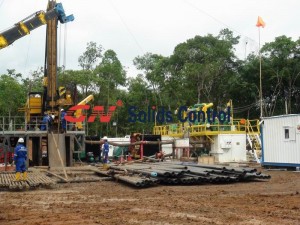Geotechnical drilling is drilling which is often related to the construction of a structure such as a building or an oil rig. It can be part of the construction process as well as part of the investigation process conducted on site before the structure is built.
It includes drilling to remove rock and soil samples, along with drilling to evaluate soil stability and other topics of interest. As part of the construction process, geotechnical drilling includes drilling to prepare for foundations, caissons, and various supports. Drilling of this kind is overseen by an engineer who confirms the placement of the drill and makes sure that the drilling is conducted properly.
What is geotechnical investigation?
Before the construction starts it is good to know your conditions.Investigating the soil is a good way to map the challenges ahead.
Commonly used methods
Depending on ground conditions and required drilling depth, core drilling or RC drilling can be the methods of choice. SPT or Standard Penetration Tests are performed by recording the number of hammer blows needed to drive up a sample tube to certain depth in to the ground. This would indicate the relative density of the soil.
How to process the mud produced by Geotechnical drilling?
The mud produced by Geotechnical drilling is very less, it depends on the length and the core diameter. Usually its treating capacity is only 5m3/h or less, but it can not be discharge away directly to the environment because of strict environment protection regulation. If you have such problem, pls contact with GN solids control.
GN is mud processing specialist in China, we can help you to solve such problem. Also we can provide mud recycling system for all trenchless type, oil & gas drilling, drilling waste processing, etc.
